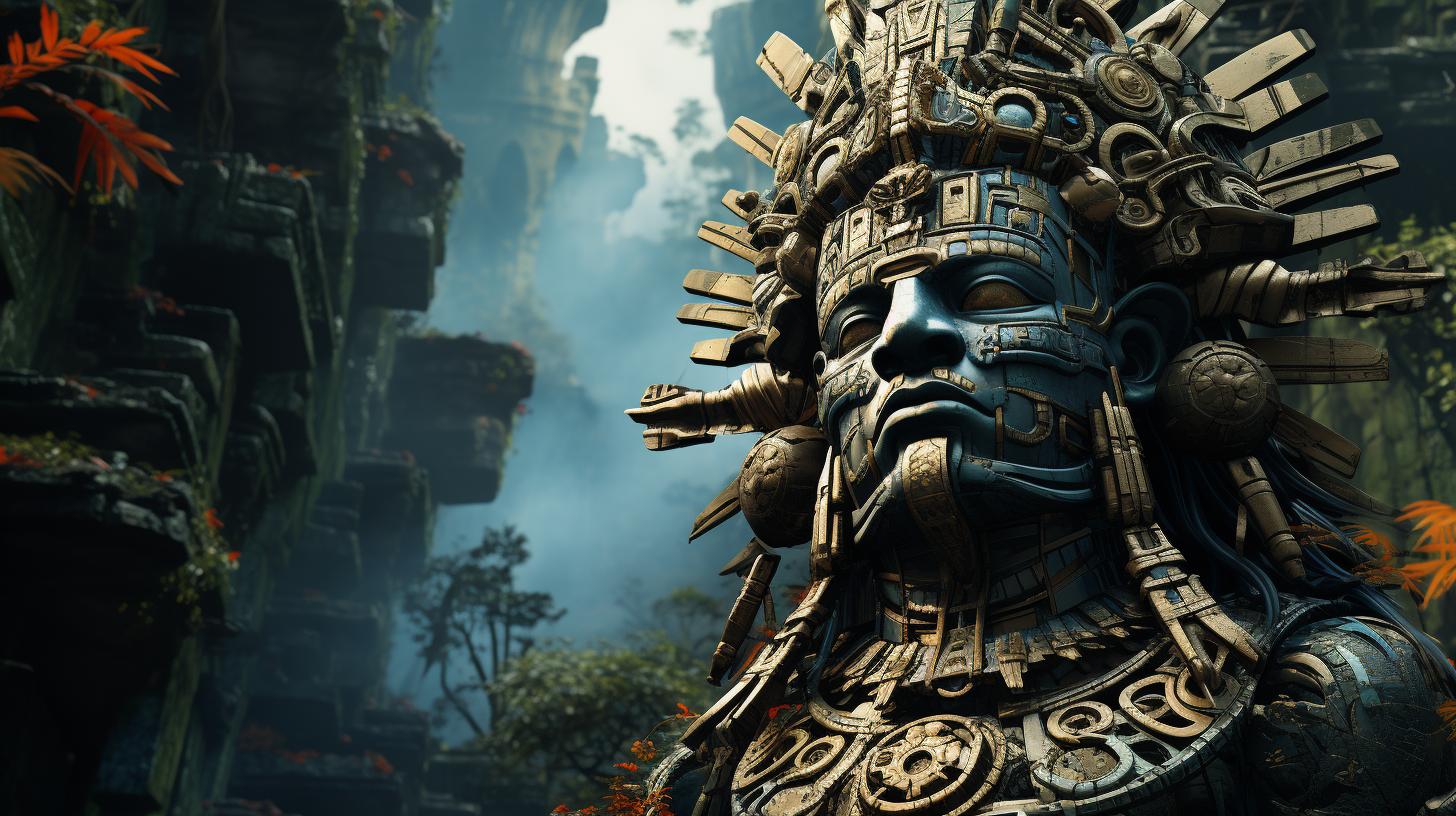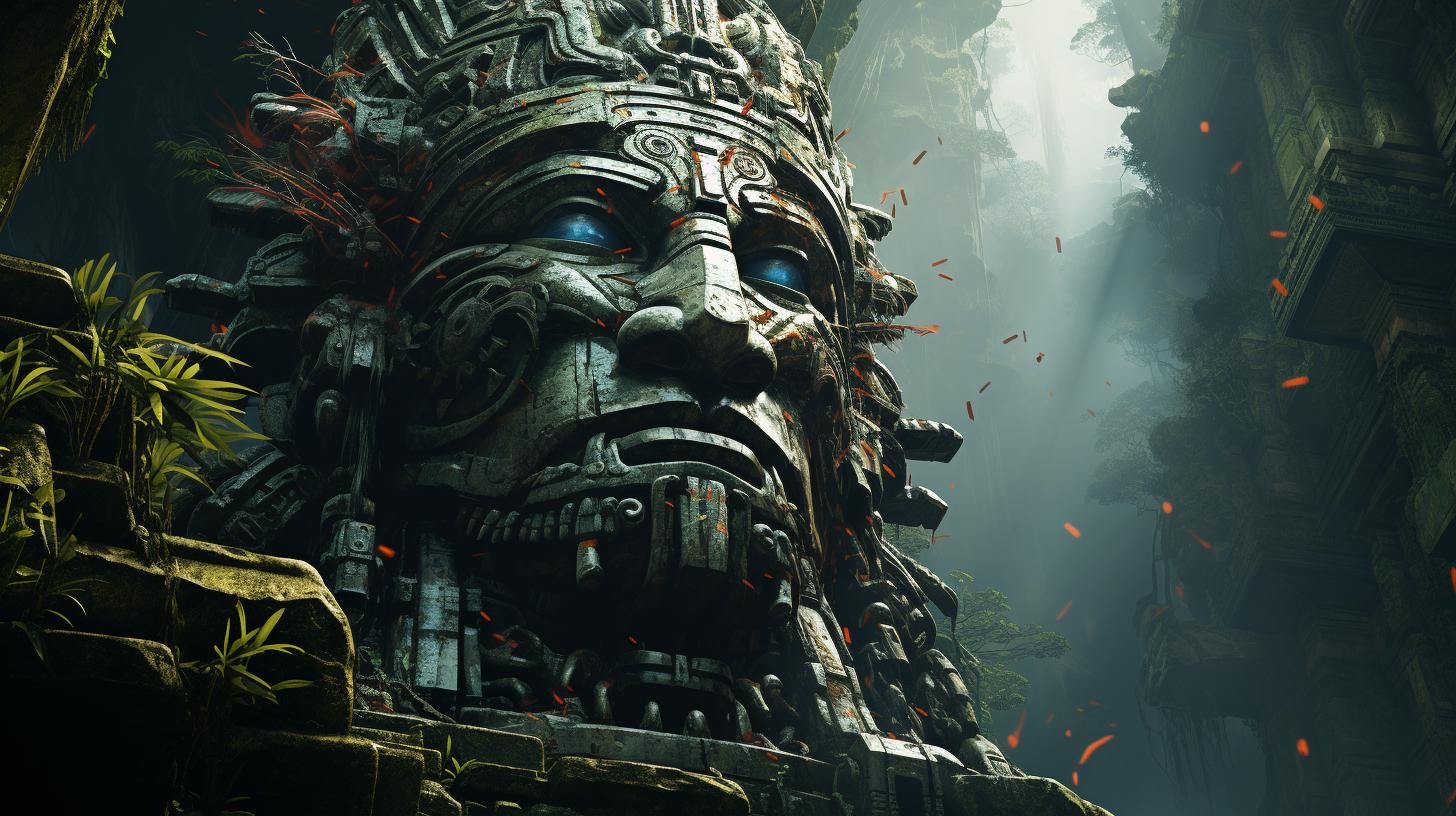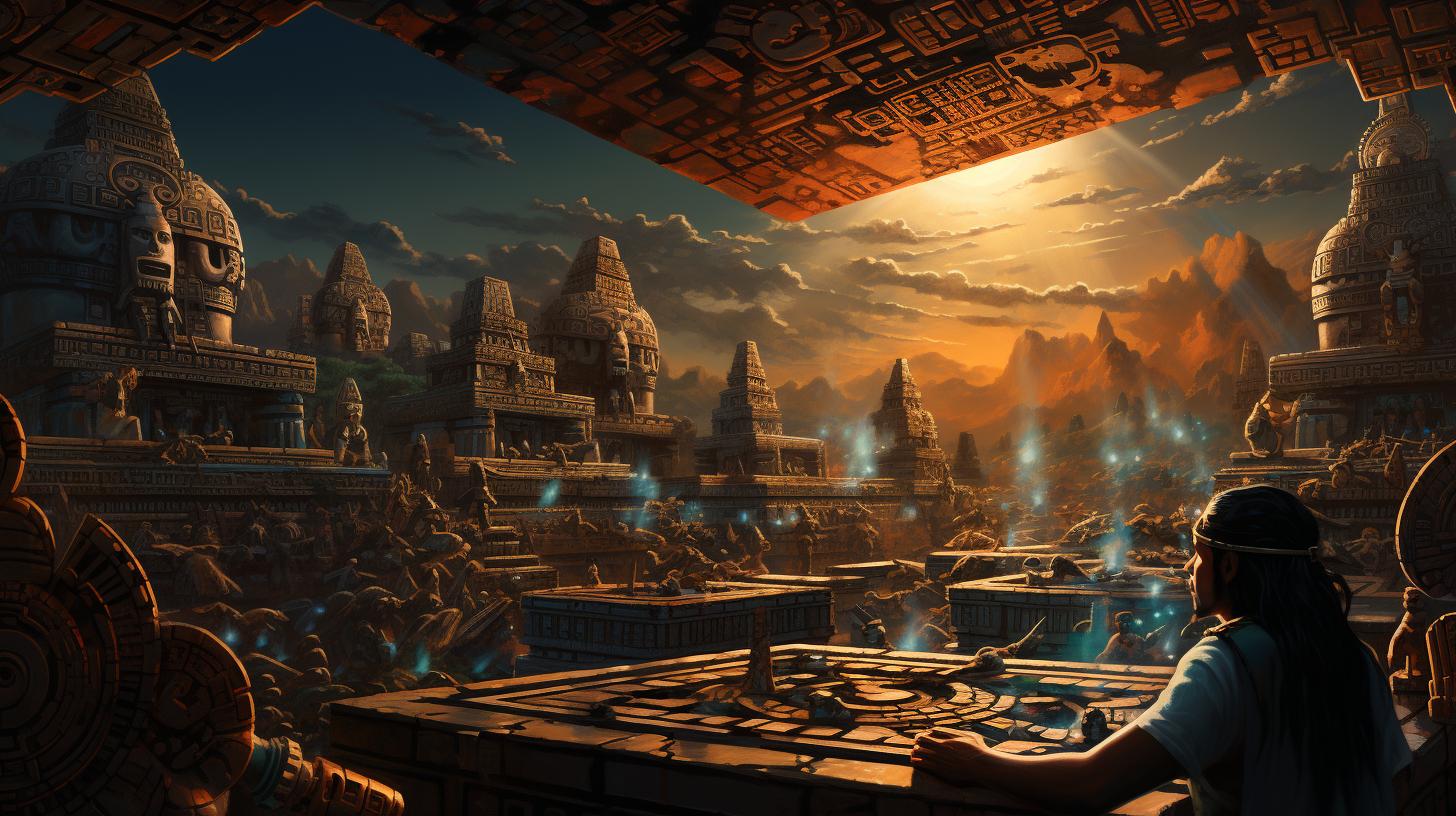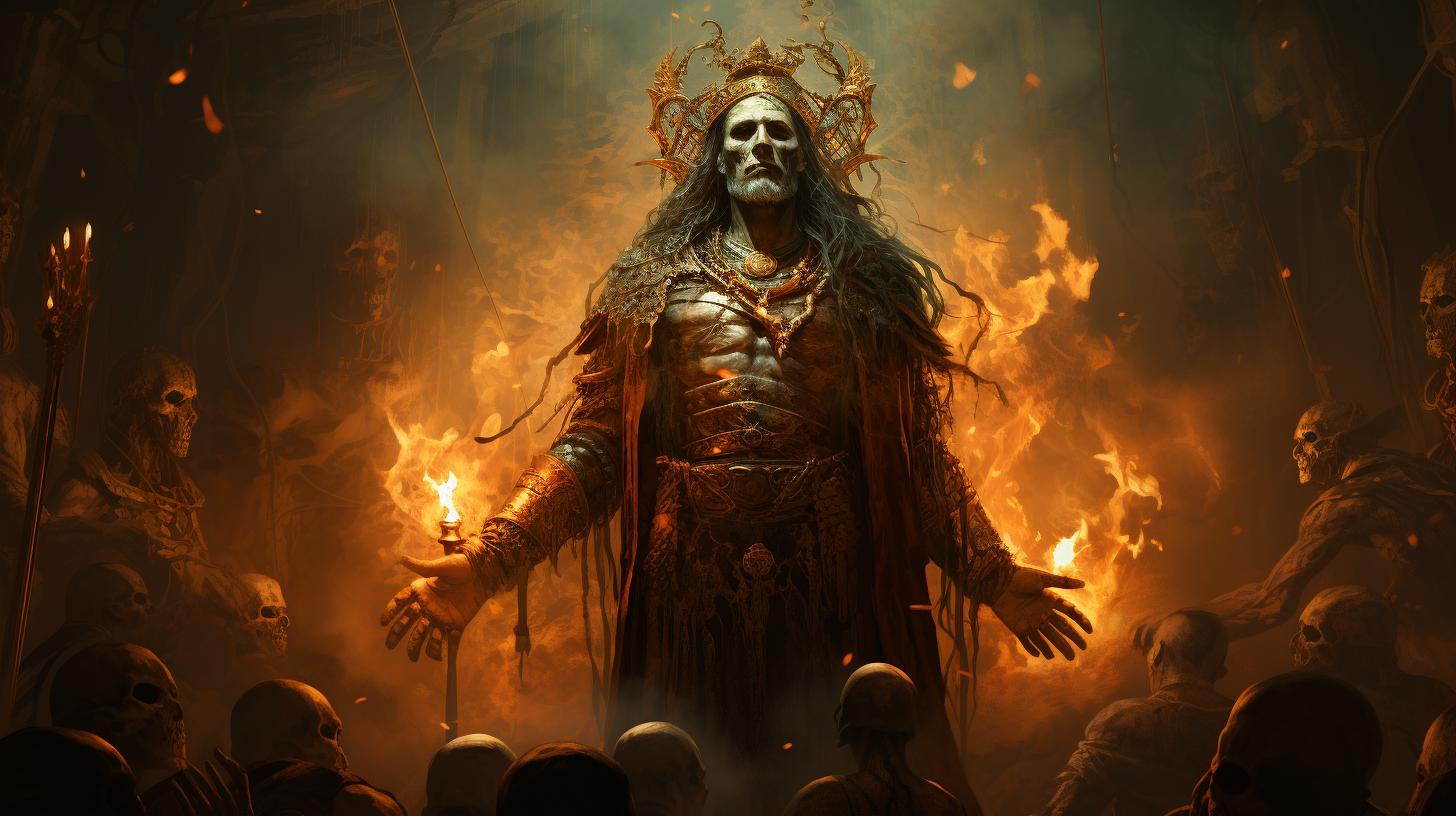Tamarugal Geoglyph: Exploring the Enigma of the Tarapaca God

The Tarapaca God geoglyph, located in Chile’s Atacama Desert, remains an intriguing enigma. This colossal figure, measuring 119 meters in length, was created between 900 and 1450 AD by the ancient inhabitants of the region.
Some speculate that it represents a shaman or yatiri, while others suggest possible astronomical purposes. Considered a significant archaeological monument and cultural heritage of Chile, the geoglyph continues to captivate researchers and visitors alike, inviting us to unravel its ancient origins and symbolism.
The Atacama Desert proudly boasts numerous geoglyphs, adding to its enigmatic allure.
The Mystery of the Tarapaca God Geoglyph
Exploring the Atacama Desert and its Enigmatic Geoglyphs
The Atacama Desert in Chile has long been a site of fascination as it houses numerous enigmatic geoglyphs. These massive figures, etched into the desert floor, have puzzled researchers for centuries.
Among these intriguing geoglyphs is the Tarapaca God, a colossal artwork that stretches over 119 meters. Exploring the vast expanse of the Atacama Desert, we unravel the mysteries surrounding these awe-inspiring geoglyphs and their significance to the ancient civilizations that once thrived in this arid landscape.
Unveiling the Ancient Origins of the Tarapaca God
Dating back to the years between 900 and 1450 AD, the Tarapaca God geoglyph is believed to have been created by the indigenous inhabitants of the region. While its precise origins remain shrouded in mystery, this remarkable artwork is thought to represent a shaman or yatiri, symbolizing a connection between the spiritual and natural realms.
Through careful examination of the geoglyph’s intricate design and symbolism, we delve into the ancient origins of the Tarapaca God and attempt to decipher the messages it may have conveyed to its creators.
Historical Significance and Cultural Importance of the Tarapaca God Geoglyph
The Tarapaca God geoglyph holds immense historical and cultural significance for the people of Chile. Recognized as a national archaeological treasure, it serves as a testament to the ancient civilizations that once inhabited this region.
By studying the geoglyph’s artistic style, cultural context, and possible religious symbolism, we gain insights into the beliefs, practices, and rituals of the pre-Inca civilizations that thrived in the Atacama Desert.
The Tarapaca God geoglyph stands as a tangible link to the past, preserving the rich heritage of the region and captivating visitors with its enigmatic allure.
The Tarapaca God Geoglyph: An Astronomical Calendar
The Tarapaca God geoglyph in the Atacama Desert holds intriguing astronomical features that have captivated researchers for centuries.
By investigating the intricate details of this geoglyph, we can begin to unravel its potential as an ancient astronomical calendar.
Investigating the Astronomical Features of the Geoglyph
The Tarapaca God geoglyph exhibits specific lines and shapes that suggest a deep understanding of celestial movements. Researchers have meticulously studied the orientation and alignment of these features to comprehend their relationship with astronomical phenomena.
Examining the angles and positions of the lines, experts have hypothesized that the geoglyph may have served as a guide to track the movement of celestial bodies, possibly indicating the lunar cycle and predicting seasonal changes.
Mapping the Lunar Movement and Seasonal Changes
One prevailing theory suggests that the lines extending from the head of the Tarapaca God may represent lunar paths. By closely observing the position of the moon in relation to these lines, ancient civilizations might have been able to predict lunar phases and determine the changing seasons.
Mapping the lunar movement with precision would have offered valuable insights into crop cultivation, astronomical events, and natural cycles, aiding in the planning of agricultural activities and religious ceremonies.
Debunking Theories: Alien Representations or Shamanic Figures?
While the Tarapaca God geoglyph’s origin remains shrouded in mystery, it has sparked numerous theories and debates.
Some proponents suggest that the figure represents extraterrestrial visitors, pointing to its distinct features as evidence.
However, many scholars argue that the geoglyph more likely symbolizes a shaman or yatiri of ancient Andean cultures.
Shamanic figures were revered for their connection with the spiritual realm and played crucial roles in the societies of the time.
By debunking the speculation surrounding alien representations, we can focus on understanding the cultural and spiritual significance of this intriguing geoglyph.
Decoding the Symbolism and Meaning Behind the Tarapaca God
The Tarapaca God geoglyph holds deep symbolism and meaning that has intrigued researchers for centuries. By examining Andean deities and delving into legends and mythology, we can begin to unravel the purpose and ritualistic significance of this enigmatic figure.
Examination of Andean Deities and Possible Connections
The Tarapaca God geoglyph is believed to have connections to Andean deities, drawing inspiration from their rich religious beliefs and practices. By studying these ancient gods, such as Inti, the sun god, and Pachamama, the earth goddess, we can gain insights into the possible symbolism integrated into the geoglyph.
Their roles in the Andean cosmology and their influence in the region provide a backdrop for understanding the deeper meanings behind the Tarapaca God.
Insights from Legend and Mythology: Tunupa-Tarapaca
Legend and mythology offer fascinating tales that may shed light on the Tarapaca God geoglyph’s origins and symbolism. Among the stories, one prominent figure stands out – Tunupa-Tarapaca. This deity, known as the god of thunder and lightning, is said to have traveled from Lake Titicaca to the Pacific Ocean.
Exploring the legends associated with Tunupa-Tarapaca can unveil connections and interpretations of the geoglyph’s symbolic representation.
Unraveling the Purpose and Ritualistic Significance
Beyond its artistic and cultural value, the Tarapaca God geoglyph likely served a specific purpose within the indigenous communities of the time. Uncovering its ritualistic significance involves analyzing the placement, alignment, and other elements within the geoglyph.
The study of archaeological evidence and cultural practices provides valuable insights into the rituals and ceremonies that might have been associated with the Tarapaca God.
The Atacama Desert: A Canvas of Mysterious Geoglyphs
The Atacama Desert is a captivating landscape that holds a multitude of mysterious geoglyphs, including the enigmatic Tarapaca God.
These geoglyphs, scattered throughout the desert, provide a fascinating glimpse into the ancient cultures that once thrived in this region. Let’s delve into the diversity and quantity of these remarkable geoglyphs, explore their unexplained counterparts around the world, and discuss the theories and speculations surrounding their creation and purpose.
Discovering the Diversity and Quantity of Geoglyphs in the Area
The Atacama Desert boasts a rich tapestry of geoglyphs, representing a wide range of shapes, sizes, and motifs. From intricate animal figures to geometric patterns and anthropomorphic designs, these geoglyphs showcase the artistic and symbolic expression of their creators.
The sheer quantity of geoglyphs discovered in the area, estimated to be around 5000 examples, highlights the significance and depth of human history and creativity in this desert landscape.
Exploring the Unexplained: Similar Geoglyphs Around the World
While the Atacama Desert is renowned for its geoglyphs, similar enigmatic markings can be found in various parts of the world. Some of the most well-known examples include the Nazca Lines in Peru and the Blythe Intaglios in California.
These geoglyphs, like their Atacama counterparts, continue to baffle researchers, sparking theories and interpretations about their origins and purpose. The existence of similar geoglyphs globally suggests a possible interconnectedness in ancient civilizations and their reverence for the land.
Theories and Speculations on the Creation and Purpose of Geoglyphs
The creation of geoglyphs remains a subject of speculation and debate among researchers. Various hypotheses propose that these intricate markings may have served as astronomical calendars, ceremonial sites, or territorial markers.
Some theorists even suggest the involvement of extraterrestrial influence. However, the exact intentions and techniques employed by the ancient cultures to create these geoglyphs remain shrouded in mystery, as the tools available to them during that time period may not have been sophisticated.
As we delve deeper into the mesmerizing world of geoglyphs in the Atacama Desert, it becomes evident that these remarkable engravings are not just random carvings in the sand.
They represent the ingenuity, artistry, and spiritual beliefs of ancient cultures, leaving us with an undying fascination for the messages and stories they sought to convey through these timeless works.
Ancient Cultures and their Presence in the Atacama Desert
The Atacama Desert in Chile holds a rich history of ancient civilizations that inhabited the region.
From pre-Inca cultures to evidence of Tiwanaku and Inca connections, the desert unveils fascinating insights into human origins and history. Let’s explore the significant presence of these ancient cultures in the Atacama Desert.
Pre-Inca Civilizations and their Influence on the Atacama Region
The Atacama Desert was home to various pre-Inca civilizations that thrived in the area. These cultures, including the Chango, Diaguita, and the Puquina people, left a lasting impact on the region.
Through their unique traditions, agricultural practices, and societal structures, they shaped the cultural landscape of the Atacama Desert.
Evidence of Tiwanaku and Inca Connections
Excavations and archaeological findings have revealed traces of Tiwanaku and Inca presence in the Atacama Desert. These ancient Andean civilizations had extensive trade networks and exerted their influence across the region.
The presence of Tiwanaku ceramics and artifacts, as well as Inca roads and architectural remnants, highlights their historical significance in the area.
Unveiling the Past: Insights into Human Origins and History
The ancient cultures that inhabited the Atacama Desert provide valuable insights into human origins and history in the region.
By studying their traditions, art, and technologies, researchers can piece together a narrative of how early societies adapted and thrived in this arid environment. These discoveries shed light on the resilience, ingenuity, and diversity of human civilizations throughout history.
The Cultural Heritage and Preservation Efforts of the Tarapaca God
The Tarapaca God geoglyph holds immense cultural value as a national archaeological treasure in Chile. Efforts are consistently made to safeguard and preserve this remarkable ancient artwork, along with other geoglyphs in the Atacama Desert.
Conservation initiatives are crucial to protect these delicate formations against natural erosion and human interference, ensuring their longevity for future generations.
The Atacama Geoglyphs as a National Archaeological Treasure
The Atacama geoglyphs, including the Tarapaca God, are a testament to the rich cultural heritage of the region. These intricate and mysterious figures serve as valuable historical markers, providing insights into the beliefs, rituals, and lives of ancient civilizations.
Recognizing their significance, the Chilean government has designated them as national archaeological treasures, emphasizing their importance as part of the country’s identity and heritage.
Challenges and Conservation Efforts: Protecting the Geoglyphs
Preserving the Tarapaca God and other geoglyphs comes with its share of challenges.
The harsh desert climate, human activities, and potential vandalism pose immediate threats to these fragile ancient artworks. To address these challenges, conservation organizations collaborate with local communities, researchers, and authorities to implement protective measures.
These efforts include monitoring, limited access, erosion control, and education campaigns to promote responsible tourism and raise awareness about the importance of preserving these cultural treasures.
Educational Value and Tourism Potential
Besides their cultural significance, the Tarapaca God geoglyph and its counterparts offer valuable educational opportunities.
Researchers, archaeologists, and historians continuously study and analyze these geoglyphs to unravel their hidden meanings and gain insights into the ancient civilizations that created them. Moreover, these enigmatic figures attract tourists and visitors from around the world, contributing to local economies and promoting cultural exchange.
Through guided tours, informative signage, and interpretive centers, visitors can appreciate the historical context and learn about the cultural heritage of the Atacama Desert.
Preserving the cultural heritage of the Tarapaca God geoglyph and the larger collection of Atacama geoglyphs requires continued dedication and collaboration between various stakeholders.
By safeguarding these treasures, we can ensure that future generations can explore and appreciate the ancient wisdom and artistry embedded in these magnificent creations.
The Tarapaca God Geoglyph in Popular Culture
The Tarapaca God geoglyph has become a subject of fascination and intrigue in popular culture, inspiring various depictions in movies, literature, and artistic interpretations.
This enigmatic figure has captured the imagination of many, further fueling the curiosity surrounding its origin and meaning.
Fascination and Intrigue: Depictions in Movies and Literature
The Tarapaca God geoglyph has made appearances in several movies, adding to its mystique and allure. Filmmakers have been drawn to the enigmatic nature of this ancient symbol, using it as a backdrop for stories that explore ancient civilizations, mysteries, and extraterrestrial encounters.
In literature, authors have woven tales around the geoglyph, incorporating it as a central element that holds secrets and unlocks hidden knowledge.
Movies:
- The Enigma of Tarapaca: A thrilling adventure that follows a group of explorers as they unravel the secrets of the geoglyph and its connection to an ancient prophecy.
- Shadows in the Atacama Desert: A suspenseful thriller where the Tarapaca God geoglyph becomes a key clue in solving a series of mysterious disappearances.
- Lost in Time: An epic science-fiction film that explores the journey of a modern-day archaeologist who discovers the geoglyph’s ability to manipulate time and space.
Literature:
- The Chosen Symbol: A gripping novel that delves into the legends and myths surrounding the Tarapaca God geoglyph, exploring its significance in ancient Andean cultures.
- The Glyph’s Secret: A fast-paced adventure where a group of young protagonists embarks on a quest to decipher the secrets hidden within the Tarapaca God geoglyph.
- Whispers in the Sand: A captivating tale that merges historical fiction and fantasy, revealing a parallel world connected to the ancient symbol of the Tarapaca God.
Artistic Interpretations and Contemporary Perspectives
The Tarapaca God geoglyph has also inspired contemporary artists to explore its symbolic meaning and incorporate its imagery into their works.
Paintings, sculptures, and digital art have captured the essence of this iconic figure, allowing viewers to experience its enigmatic energy firsthand. Through various artistic mediums, artists aim to convey their interpretations of the geoglyph’s role in history, spirituality, and modern society.
Notable Art Installations:
- “The Guardian of Time”: A large-scale sculpture that mirrors the Tarapaca God geoglyph, symbolizing the mystery and transcendence of ancient cultures.
- “Eternal Echoes”: A captivating digital art project that visualizes the geoglyph’s sacred vibrations and its timeless connection to human consciousness.
- “Shadows of the Past”: An immersive multimedia installation that invites viewers to explore the layers of symbolism embedded within the Tarapaca God geoglyph.
Impact and Legacy: Inspiring Wonder and Curiosity
The presence of the Tarapaca God geoglyph in popular culture has contributed to its enduring legacy as a symbol of human imagination and ancient mysteries.
Its depiction in movies, literature, and contemporary art has ignited curiosity and sparked a desire for further exploration and understanding of its cultural and historical significance. The geoglyph continues to awe and inspire, reminding us of the boundless creativity and enduring legacy of ancient civilizations.
.




















